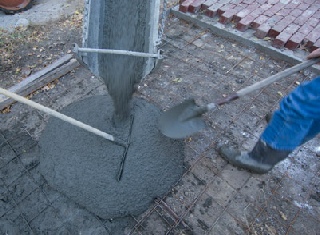
Sales : Support :
Registered in England and Wales company # 03449181.
This website does not use cookies.
© Copyright: Conwy Valley Systems Limited 2000 - 2025
Conwy Valley Systems Limited,
West Acre, Llys Helyg, Deganwy
CONWY LL31 9BN, United Kingdom.
VAT# GB 741 5190 48
A Geoscience Wales founding member.
PETROG includes patent protected technology.




|
Images are licensed under the Creative Commons Attribution ShareAlike 3.0 Licence. In short: you are free to share and make derivative works of the file under the conditions that you appropriately attribute it, and that you distribute it only under a license identical to this one.Official license |
|
|
|
|
|
|
|
|
|
|
|
|
|
PETROG is an established tool for point-counting concrete materials from built structures, either in thin section or polished block, and has dictionaries both of constituent materials and the alteration processes which may be experienced by concrete in situ. |
|
PETROG’s high-precision SteppingStage provides the basis for point counting in all situations, handling both polished block specimens and thin sections, from 1″ x 2″ (2.5cm x 5cm) mounts to 2″ x 3″ (5cm x 7.5cm) mounts, and allowing a pol stage to be rotated at all times. The smallest addressable unit of the SteppingStage is 0.1 micron and repeatable movement accuracy is of the order of 4 microns, providing the level of accuracy need to be able to visit and then successfully re-visit up to 4000 points on a polished block specimen. |
|
PETROG’s image collection and analysis system allows the bulk of the point-count to be undertaken by viewing the computer’s monitor instead of through the eyepiece, relieving eye-strain for the operator and hence increasing both accuracy and efficiency in the whole process. Just as important, however, is that by tying the image back to the analysis undertaken and to the point on the specimen being described, PETROG provides the basis for QA and an audit trail |
|
|
|
|
Point counting of concrete specimens in thin section is an invaluable tool for estimating the structural integrity of concrete constructions and is indeed a statutory requirement in some places. PETROG’s unique Quality Assurance and audit trail are ideally suited to statutory work and to any work with a potential for litigious outcomes. The built-in redundancy in the naming and indexing used for data storage, the collection of images, and the identification of points on the thin-section specimen are all designed to minimize operator error and maximize the ability to trace back any analysis to its supporting data
Point-counting of constituents of cement and concrete can provide invaluable assistance to the production process and help to ensure consistency in production, as well as obviate some of the more common production faults which can give rise to the need for statutory analysis described above. |
|
|
|
Once data acquisition is complete PETROG’s intelligent database enables any number of pre-determined analyses to be undertaken and reported almost instantaneously, as well as allowing new analyses to be built up to the user’s specification. Analysis of voids may be carried out separately from, or jointly with, analysis of the material phases, All reports can be provided either in digital form suitable for export to other software (e.g. Excel) or in report-ready formatted files, such as Microsoft Word format documents, with embedded images at the user’s discrection. |
|
|
|
|
|
ASTM C1356 (Cement Standards and Concrete Standards) covers protocols for point counting of clinker in polished block specimens and asserts that this technique is the most accurate and reliable analytical tool available for the task. PETROG is the ideal tool for undertaking this analysis to meet the strict requirements of this and similar standards and protocols, in terms of data collection, data analysis, and reporting results. To achieve satisfactory levels of confidence in the results, thousands of points may need to be counted on a single specimen. PETROG is able to manage this detail and to simplify the process. If a point count is interrupted for any reason, then PETROG will remember the full status of the job until it can be resumed. Morphological or textural analysis can be undertaken concurrently with modal analysis to provide a full and detailed summary of the material properties. Material properties may be recorded in any required level of detail, because PETROG allows users to log additional information on e.g. structure, alteration, morphology. It stores any additional data in the same structured database, allowing all information to be retrieved and combined in any way desired. |
|
PETROG and Concrete
PETROG is being used to check the quality and content of concrete both retrospectively, to provide accurate, quantitative data to support analytical reports and statutory analyses, and predictively, where exact composition is critical.
PETROG supports analysis of concrete in many ways:
- Raw Material Input Detailed and rigorous analysis of the materials used in the manufacture of concrete leads to better Quality Assurance and better products. Point counting limestone is a valuable aid to the quantification of quality standards.
- Finished Product Testing Point-counting analysis of thin sections from samples of the product is an important step in ensuring quality and meeting statutory standards. PETROG’s unique ability to record images at every point ensures that statutory targets are not only met but also are seen to be met and can be verified at any later date.
- Periodic Testing for Analytical Reports and Statutory Analyses There are many situations where retrospective testing is needed, either routinely or as part of a specific investigation. PETROG is being used to check the quality and content of concrete for statutory analyses in the UK and is meeting and exceeding all statutory requirements.
| Academic and Research |
| Oil & Gas |
| Coal |
| Concrete |
| Ceramics in Archaeology |
| Cement Clinker |
| Scanned Images, Archives & AI |
| Asbestos |
| Scanned Images |
| Archives and Legacy Data |
| AI & Machine Learning |
| PETROG |
| PetrogLite |
| SteppingStage |
| PETROG Virtual Keyboard |
| Cameras |
| Additional Services |
| Features |
| Who Uses Petrog ? |
| Demonstrations |
| FAQ (PETROG) |
| Upgrade from PetrogLite |
| Enquiries |
| Custom Work Flow and Protocols |
| Data Structures |
| Data Capture & Analysis |
| Sample Scanning |
| Reporting |
| Data : Storage & Exchange |
| Area of Interest |
| Set Area of Interest |
| Compositional Analysis Methodology |
| Compositional Data |
| Textural Data |
| Qualifiers and Relationships |
| Microporosity |
| Microporosity and XRD |
| Dictionaried Lists |
| Point counting Application |
| Compositional Data Entry Image |
| Quantitative Composition Summary |
| Photo stitching |
| 'Magic Mouse' for polarised images |
| Report Document |
| Triangular Diagram |
| Compositional Plot |
| Rose Diagram |
| Kite Diagram |
| Concentric Pie Chart |
| Grain Size Analysis |
| Data Storage |
| Data Exchange |
| Touchstone |
| Where is Petrog ? |
| Testimonials |
| Replacing a point counter |
| System Requirements |
| Software |
| Gallery |
| Enquiries |
| 10 years of the SteppingStage |
| Espanol |
| PVK with PetrogLite |
| Cameras and PETROG |
| Supported Cameras |
| HDMI Cameras |
| Discontinued Cameras |
| Training |
| Downloads |
| Change log |
| FAQ (Support) |
| Known issues |
| Future |
| PETROG 5 |
| PetrogLite 5 |
| PETROG Virtual Keyboard |
| Tutorials |
| YouTube |
| Older versions |
| PETROG 5 Upgrade |
| PETROG 5 Installation |
| Documentation |
| PetrogLite 5 Upgrade |
| PetrogLite 5 Installation |
| Documentation |
| PETROG 4 |
| PetrogLite 4 |
| PETROG 3 |
| PetrogLite 3 |
| PETROG 4 Upgrade |
| PETROG 4 Installation |
| Documentation |
| PetrogLite 4 Upgrade |
| PetrogLite 4 Installation |
| Documentation |
| PETROG 3 Upgrade |
| PETROG 3 Installation |
| Documentation |
| PetrogLite 3 Upgrade |
| PetrogLite 3 Installation |
| Documentation |
| 5.8.3 |
| 5.8.2 |
| 5.7.0 |
| 5.6.0 |
| 5.5.4 |
| 5.4.0 |
| Version 5 (earlier) |
| Version 4 |
| Version 3 |
| Version 2 |
| 5.3.6 |
| 5.3.1 |
| 5.3.0 |
| 5.2.0 |
| 5.1.2.0 |
| 5.1.1.0 |
| 4.8.0.0 |
| 4.7.1.0 |
| 4.6.1.0 |
| 4.5.8 |
| 4.5.6 |
| 4.5.5 |
| 4.5.0 |
| 4.4.2 |
| 4.2.2.0 |
| 4.2 |
| 4.1.0.1 |
| 4.0.2.1 |
| 4.0.0.0 |
| 3.7.1.0 |
| 3.6.1.0 |
| 3.6.0.1 |
| 3.5.3.0 |
| 3.5.1.0 |
| 3.5.0.1 |
| 3.4.0 |
| 3.3.0 |
| 3.2.2.0 |
| 3.2.1.0 |
| 3.1.9.9 |
| 3.1.9.4 |
| 3.1.9.1 |
| 3.1.9.0 |
| 3.1.8.0 |
| 3.1.6.0 |
| 3.10 |
| 3.05 |
| 3.02 |
| 3.01 |
| 2.68 |
| 2.67 |
| 2.66 |
| 2.65 |
| 2.64 |
| 2.45-2.63 |
| Windows 7 Installation |
| PETROG 64-bit |
| "Out of Resources" (2020) |
| Control Box Chip Upgrade (2009) |
| USB - Serial connection |
| News 2023-24 |
| News 2022 |
| News 2021 |
| News 2020 |
| News 2019 |
| News 2018 |
| News 2017 |
| News 2016 |
| News 2015 |
| News 2014 |
| News 2013 |
| News 2012 |
| News 2011 |
| News 2010 |
| Nikon Small World 2013 |
| Statistical Techniques |
| PETROG in Academia |
| General Articles |
| Quantitative Grain Coat Analysis |
| Point Counting |
| Trask sorting |
| Regional Support |
| Newsletter |
| Newsletter Archive |






 Download Information sheet
Download Information sheet